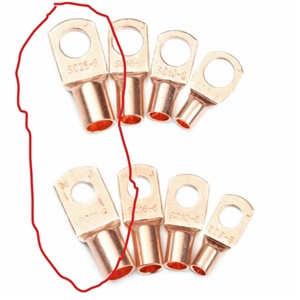Assuming the copper water pipe (above the stop-cock at end of MDPE pipe) is close to the gas pipe, is it acceptable/permissible for the earth bonding conductor to be a single 10 mm² green/yellow from the consumer unit to go to say the water 351 earth clamp, looped around the screw and then to the gas 351? This without cutting the cable, so that it is one continuous length. Or if not looped around the crew, for a bare section to be opened up 3 strands and 4 strands and the screw fitted between?
Thanks.
Clive

